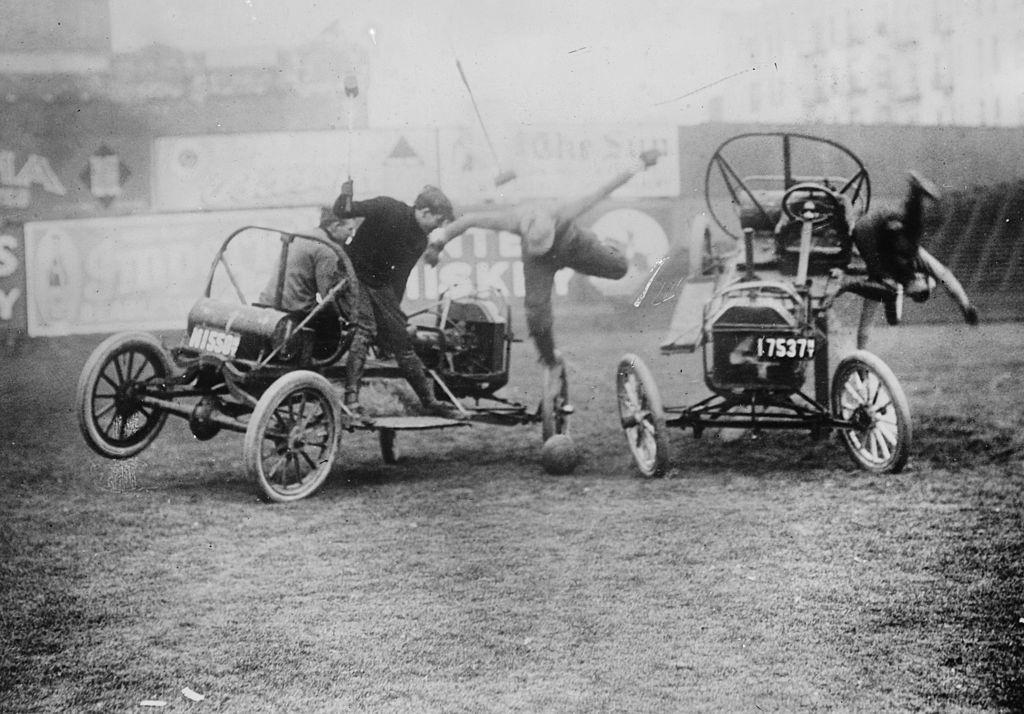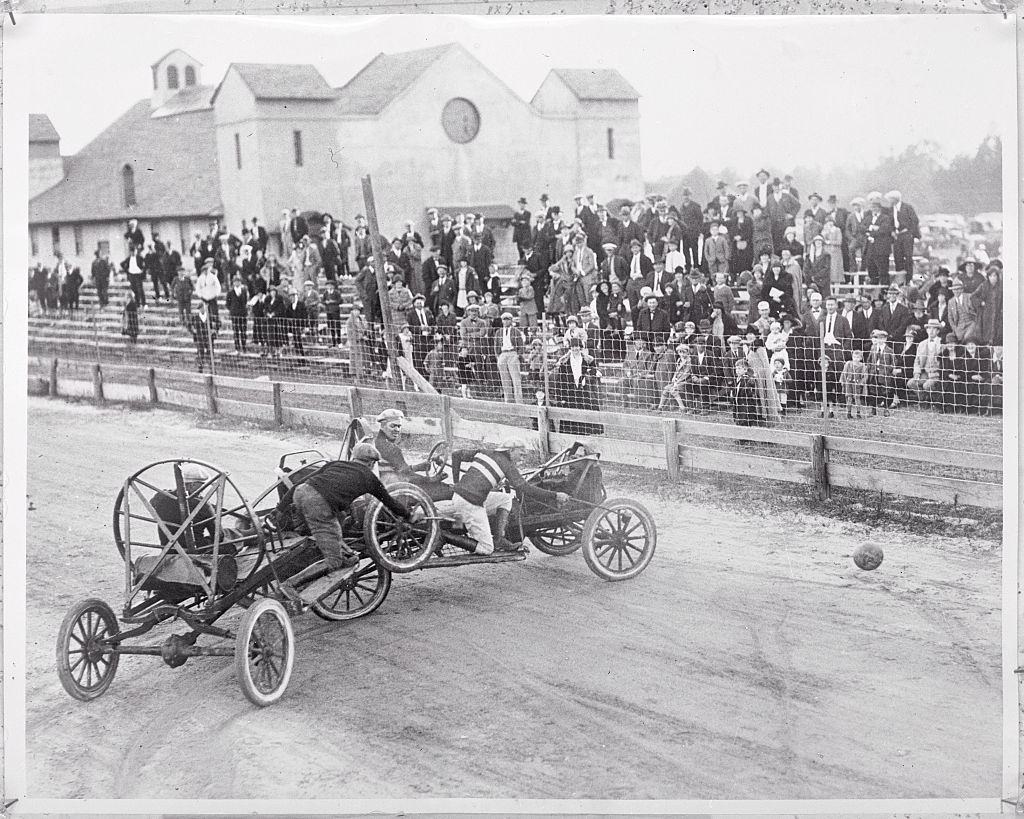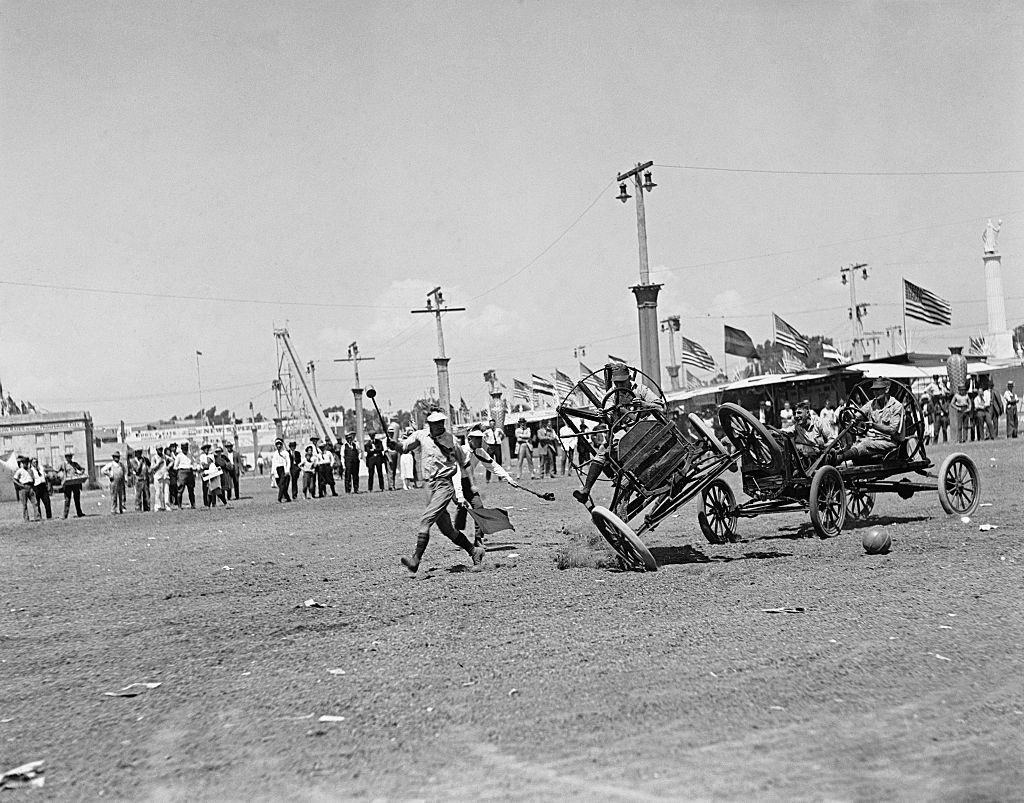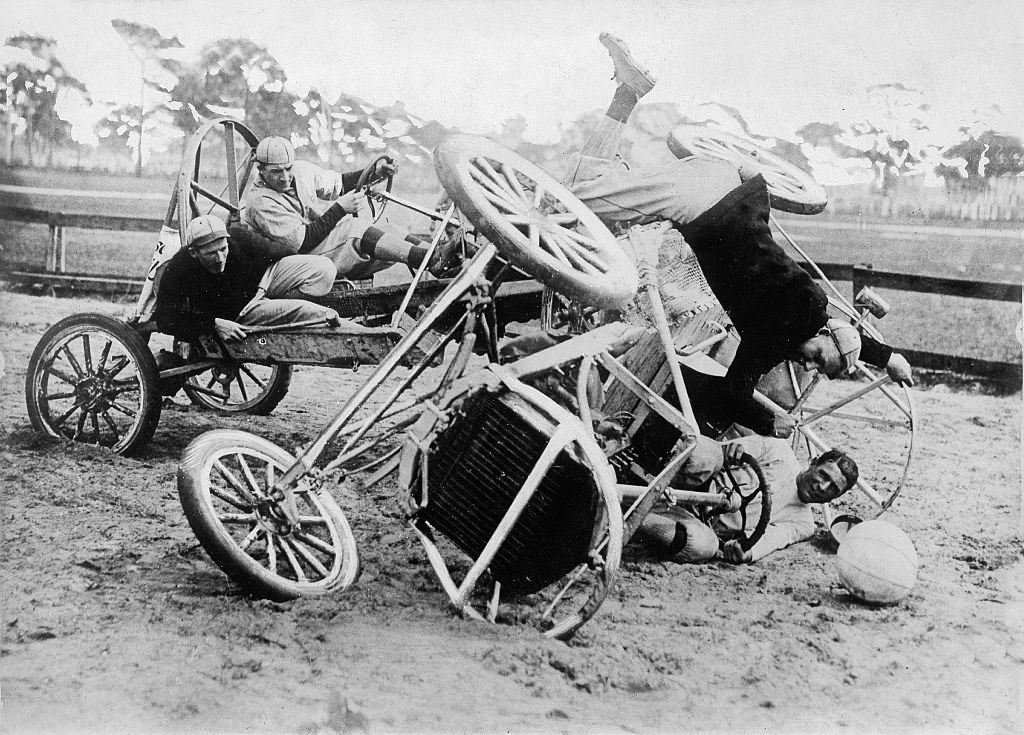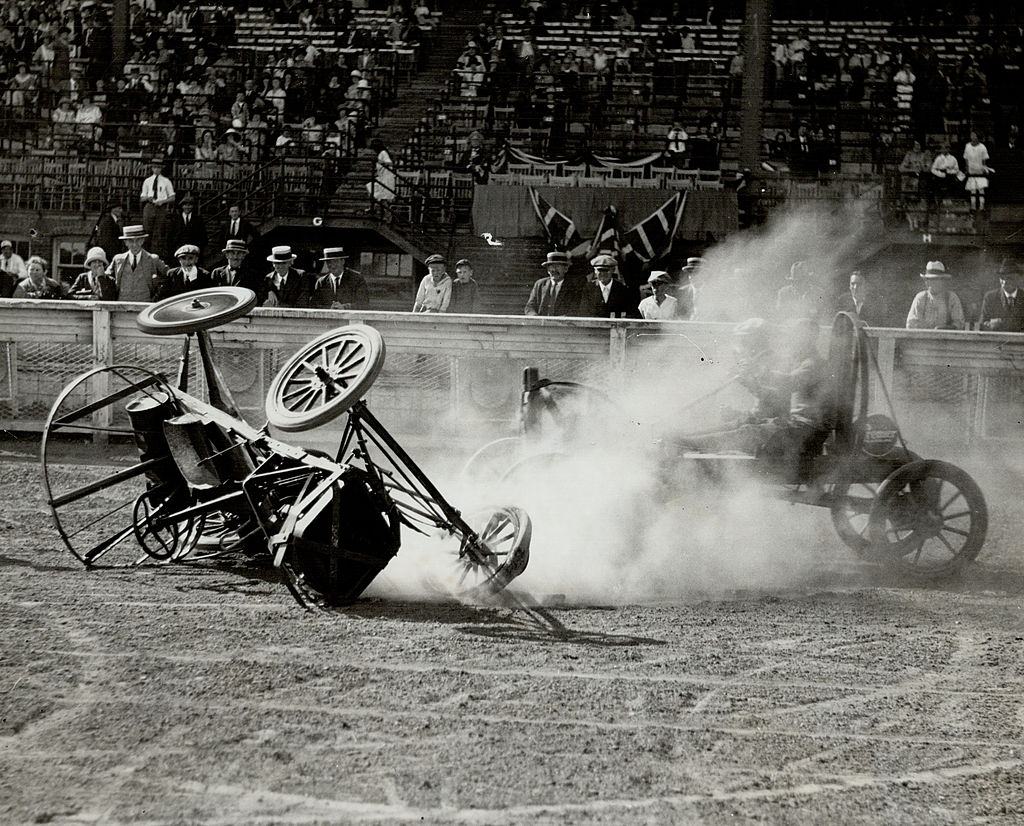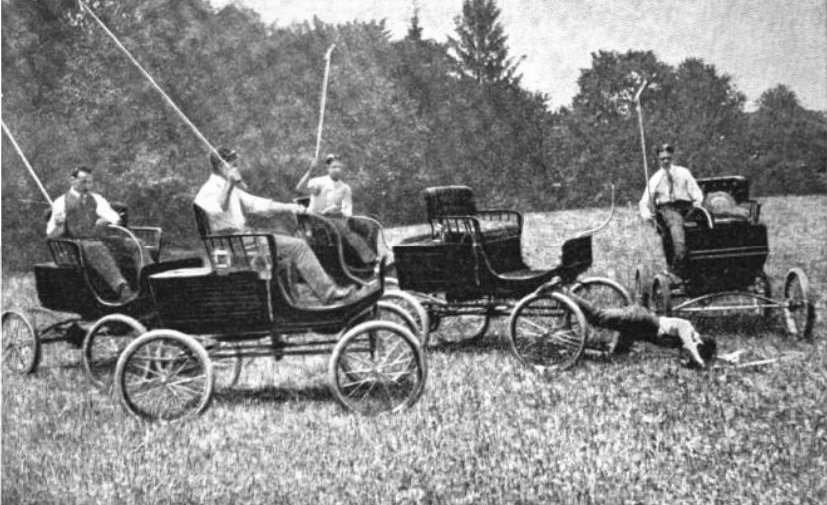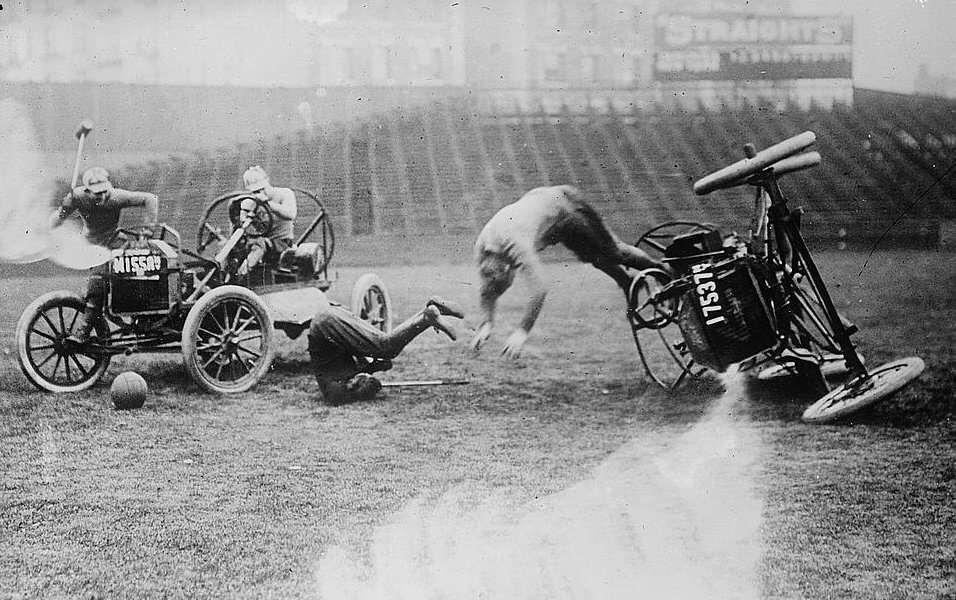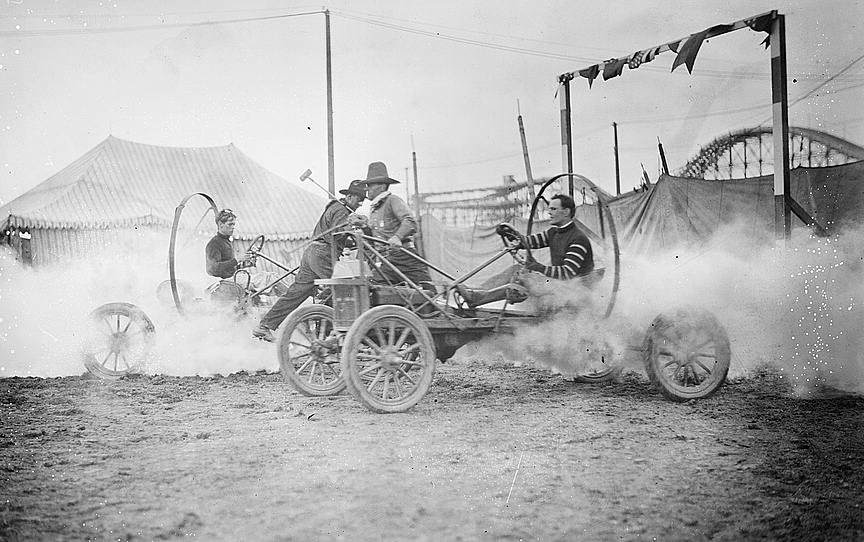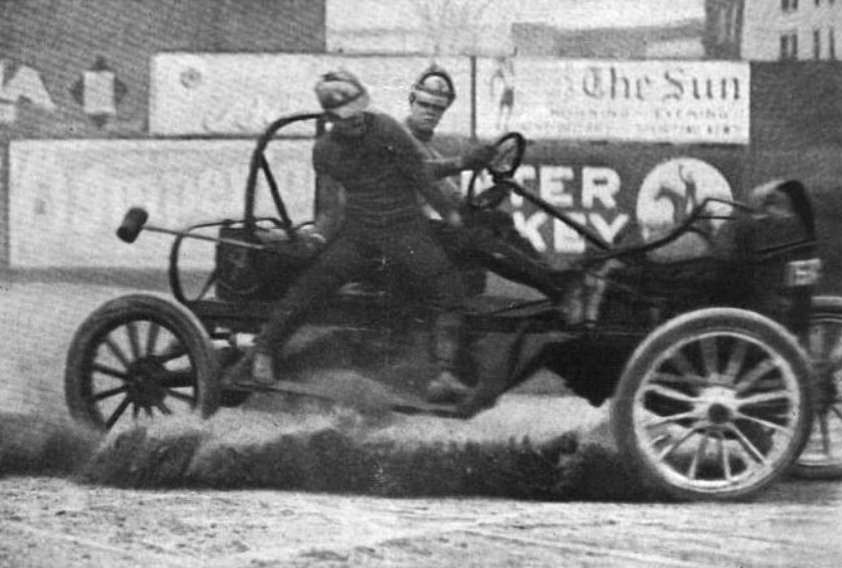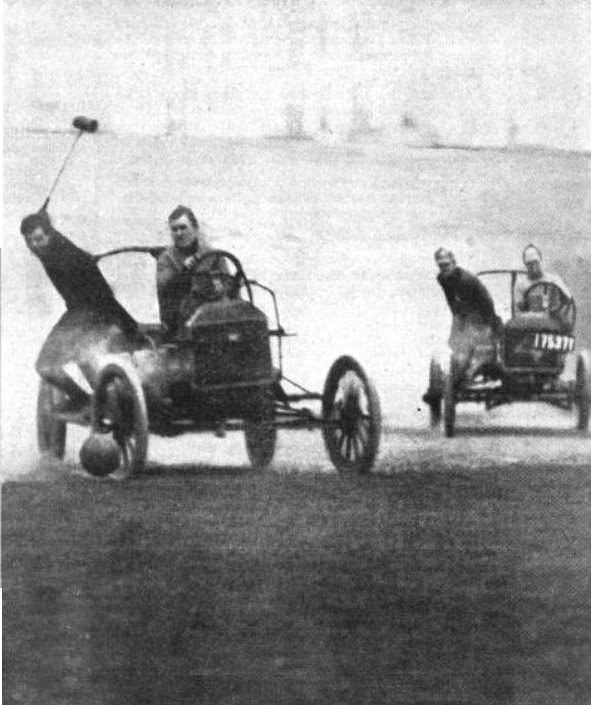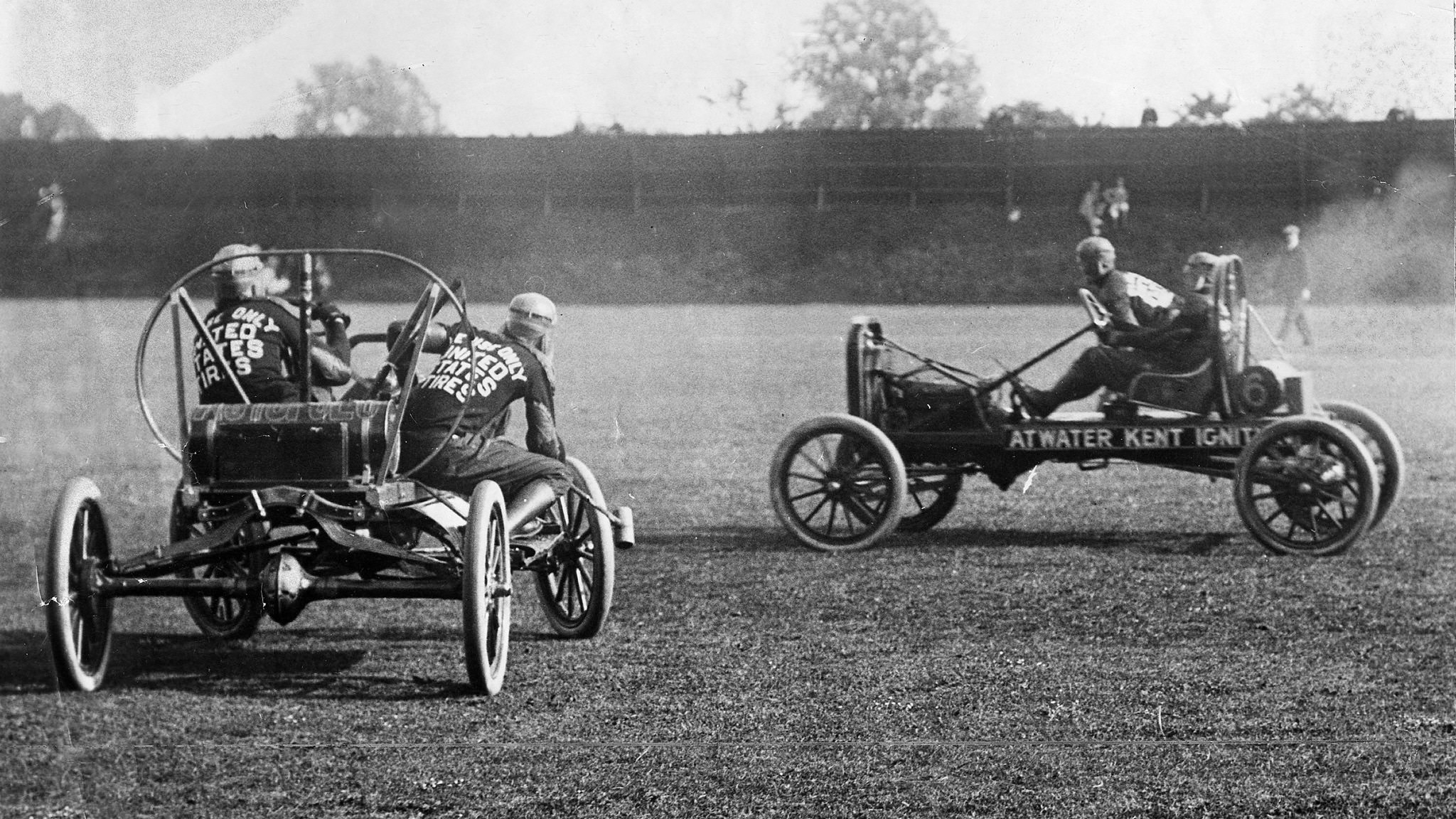The sport of automobile polo or auto polo was created in the United States in 1922. It had similar rules and equipment to equestrian polo but involved automobiles instead of horses. Between 1911 and the early 1920s, the sport was popular at fairs, events, and sports venues throughout the United States and multiple European countries. Despite its popularity, the sport was dangerous and at risk of fatalities and expensive damage to vehicles.
According to legend, Pappy Hankinson, a Ford automobile dealer, invented auto polo in 1911 as a publicity stunt designed to sell Model T cars. The first game of auto polo was played in Wichita on July 20, 1912, using four vehicles and eight players in front of 5,000 people.
The nature of the sport often caused cars to collide and become entangled, resulting in malletmen being thrown from cars. Roll cages were installed over the radiator and the rear platform of the cars to prevent injuries to players, but falls led to severe cuts and broken bones if players were run over by the cars, though auto polo-related deaths were rare.
By the time the match was over, most cars had been severely wrecked or destroyed, making most players uninsurable for material and bodily damages sustained during the game. Hankinson’s British and American auto polo teams endured 1564 broken wheels, 538 burst tires, 66 broken axles, ten cracked engines, and six cars destroyed during a year. The sport declined in popularity during the late 1920s, mainly because the cost of replacing vehicles was high, but it was briefly revived after World War II in the Midwest.
Below are some historical photos from the Automobile polo games.


